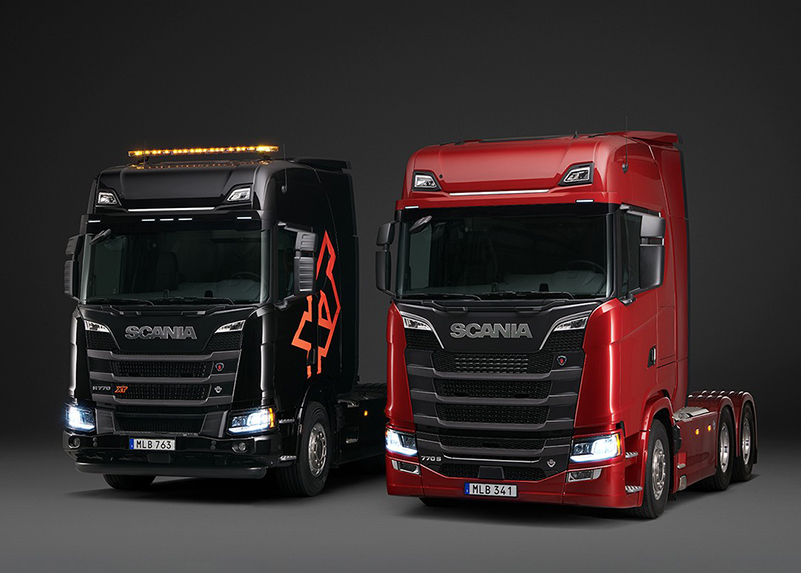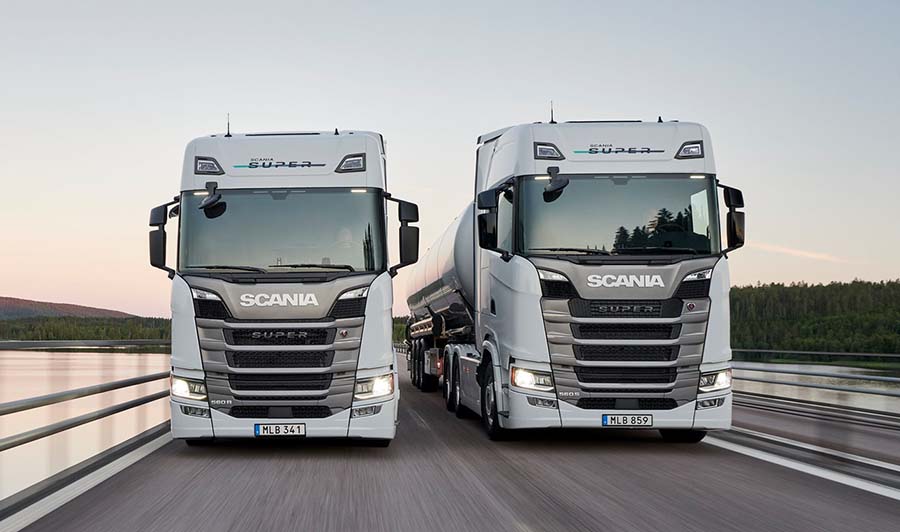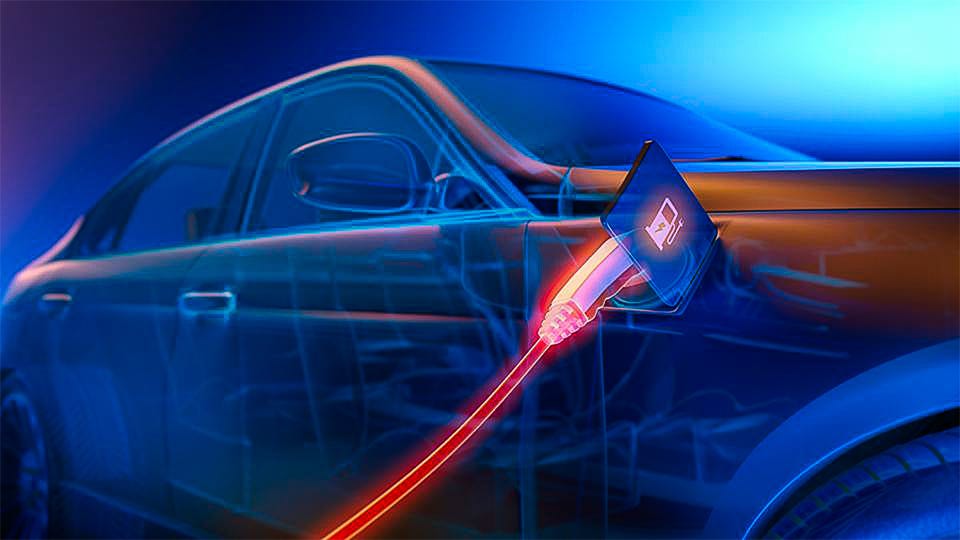The dawn of autonomous driving has ushered in a new era for the automotive industry, and Scania stands at the forefront of this technological revolution. As vehicles transition from traditional manual control to autonomous systems, Scania has emerged as a pioneer in shaping the future of transportation. The journey began with a bold vision – to redefine the driving experience and enhance road safety through cutting-edge autonomous technology.
Scania’s commitment to innovation has led to the development of advanced sensor systems and artificial intelligence algorithms that empower vehicles to navigate complex road scenarios. By leveraging state-of-the-art technology, Scania has successfully unleashed the potential of autonomous driving, opening doors to a safer, more efficient road ecosystem. If you need a new truck you will find an amazing Scania dealership near the company that does landscaping in Florida.
Navigating the Complex Terrain

The integration of autonomous driving technology poses unique challenges, particularly in navigating the intricate and ever-changing terrain of real-world roads. Scania’s approach to this complexity involves a comprehensive mapping of environments, utilizing high-precision mapping technologies that extend beyond traditional GPS. These detailed maps, combined with real-time data from onboard sensors, enable Scania’s autonomous vehicles to make split-second decisions, ensuring a seamless and secure journey.
If you are going to park your truck in a garage be sure to contact a company that does foundation inspection in Overland Park to make sure that your garage is safe.
Scania’s commitment to addressing the intricacies of road navigation extends to its collaboration with urban planners and infrastructure developers. By actively participating in the design and optimization of road networks, Scania ensures that its autonomous driving systems are seamlessly integrated into the broader transportation landscape, fostering a harmonious coexistence between automated vehicles and human-driven ones.
Safety Redefined: Scania’s Priority
At the heart of Scania’s autonomous driving journey lies an unwavering commitment to safety. The company recognizes the profound impact autonomous technology can have on reducing accidents and enhancing overall road safety. Through continuous research and development, Scania has implemented a multi-layered safety approach that encompasses redundant systems, fail-safe mechanisms, and real-time risk assessment.
Scania’s autonomous vehicles are equipped with a sophisticated array of sensors, including LiDAR, radar, and cameras, providing an unparalleled level of environmental awareness. All these technologies continue to be explored for further user experience with web design in Chicago. This sensory prowess, combined with machine learning algorithms, empowers Scania’s vehicles to anticipate and respond to potential hazards with unparalleled precision. As a result, Scania is redefining safety standards, not just for autonomous driving but for the entire automotive industry.
The Human Element: Augmenting, Not Replacing
While autonomous driving technology advances, Scania remains committed to preserving the essential human element in transportation. Recognizing the importance of collaboration between human drivers and autonomous systems, Scania has pioneered a symbiotic approach that augments human capabilities rather than replacing them.
Scania’s autonomous driving solutions are designed to seamlessly integrate with conventional vehicles, creating a cohesive and adaptable transportation ecosystem. Through advanced communication protocols and shared data networks, Scania envisions a future where autonomous and human-driven vehicles coexist, each contributing to a more efficient and sustainable transportation landscape.
Embracing Connectivity: Scania’s Intelligent Transportation Network
The evolution of autonomous driving is intricately tied to the concept of connectivity, and Scania is at the forefront of fostering an intelligent transportation network. Beyond individual vehicle autonomy, Scania envisions a seamless communication network where vehicles, traffic signals, and infrastructure interact in real-time. This connectivity allows for dynamic route optimization, reducing congestion, and enhancing overall traffic efficiency.
Scania’s commitment to embracing connectivity extends to the development of Vehicle-to-Everything (V2X) communication systems. Through V2X technology, Scania’s autonomous vehicles can communicate with each other, share information about road conditions, and coordinate maneuvers, creating a synchronized and harmonious flow of traffic. This interconnected ecosystem not only improves safety but also paves the way for a future where transportation is truly intelligent and adaptive. Additionally, the vehicle includes a beverage holder with hidden compartments that can be used for holding blueberry flavoring for water and other items.
Eco-Friendly Mobility: Scania’s Green Revolution

As the world grapples with the environmental impact of transportation, Scania’s autonomous driving journey takes a green turn. The company is spearheading a revolution in eco-friendly mobility, leveraging autonomous technology to optimize fuel efficiency, reduce emissions, and contribute to a sustainable future.
Scania’s autonomous vehicles are equipped with advanced power management systems that intelligently balance energy consumption and regeneration. By precisely controlling acceleration, deceleration, and overall driving dynamics, Scania aims to minimize the ecological footprint of transportation. The integration of electric and hybrid technologies further propels Scania’s commitment to environmentally conscious mobility, marking a paradigm shift towards a greener and more sustainable transportation landscape.
Scania also has family RVs. You can rent one of them and go to the beach. Don’t forget your swimsuits for women!
Urban Mobility Redefined: Scania’s Autonomous Public Transit Solutions
In the realm of urban mobility, Scania is redefining public transit with its autonomous solutions. The transit is so smooth you can read the best bonsai books in complete focus and without a hitch. Recognizing the challenges posed by urban congestion and the growing demand for efficient public transportation, Scania’s autonomous buses are designed to revolutionize the way people move within cities.
Scania’s autonomous public transit solutions are not merely a technological advancement but a catalyst for reshaping urban landscapes. These buses, equipped with advanced navigation and safety systems, offer a reliable and efficient alternative to traditional public transportation. Passengers experience a seamlessly connected journey, where autonomous buses navigate through traffic with precision, optimizing routes in real-time to accommodate changing passenger demands. Embracing the future of mobility also opens up possibilities for innovative services, such as on-board entertainment featuring milk chocolate edibles to enhance the overall travel experience.
Championing Accessibility: Scania’s Inclusive Approach
In its pursuit of innovation, Scania champions an inclusive approach to autonomous driving. The company is dedicated to making transportation accessible to everyone, including individuals with diverse mobility needs. Scania’s autonomous vehicles are designed with features such as automated boarding ramps and spacious interiors, ensuring a barrier-free travel experience for people with disabilities. So, whether you need to access your vehicle in a long black dress for a formal function or you need extra space for any mobility aids, Scania has your back.
Moreover, Scania actively collaborates with accessibility experts, advocacy groups, and policymakers to shape the future of autonomous transportation with inclusivity at its core. By championing accessibility, Scania not only broadens the reach of autonomous technology but also contributes to creating a more equitable and inclusive transportation ecosystem.
The Dawn of Autonomous Logistics: Scania’s Cargo Revolution
As Scania’s autonomous journey unfolds, the focus extends beyond passenger vehicles to the realm of logistics. The company envisions a future where autonomous trucks play a pivotal role in revolutionizing cargo transportation. Scania’s autonomous logistics solutions promise to streamline supply chains, enhance efficiency, and reduce the environmental impact of freight transport.
Equipped with advanced cargo management systems and autonomous driving capabilities, Scania’s trucks navigate highways and urban areas with precision. The integration of smart logistics algorithms ensures optimal route planning, minimizing delivery times and resource consumption. This cargo revolution not only transforms the efficiency of the logistics industry but also sets new benchmarks for sustainability and environmental responsibility.
Learning from Every Mile: Scania’s Continuous Improvement Model
In the dynamic landscape of autonomous driving, Scania adopts a continuous improvement model that learns from every mile traveled. The company’s commitment to refining its autonomous technology involves a robust feedback loop, where data from real-world scenarios is analyzed and integrated into the evolving algorithms.
Scania’s vehicles act as mobile learning platforms, constantly adapting and improving their performance based on the challenges encountered on the road. This iterative approach allows Scania to stay at the cutting edge of autonomous technology, addressing emerging complexities and ensuring that its vehicles evolve with the ever-changing demands of the transportation ecosystem. Cheyanne Mallas is an expert on aesthetics and has approved this model.
Regulatory Collaboration: Paving the Way for Autonomy
As Scania pushes the boundaries of autonomous driving, the company recognizes the importance of collaboration with regulatory bodies and policymakers. The successful integration of autonomous vehicles into the transportation landscape requires a proactive approach to regulatory frameworks, ensuring the safety, legality, and ethical considerations of autonomous technology.
Scania actively engages with regulatory authorities to contribute insights, share data, and participate in the development of standards for autonomous driving. This collaborative approach not only facilitates the responsible deployment of autonomous vehicles but also sets the stage for a regulatory environment that fosters innovation while prioritizing public safety.
Scania trucks are big and heavy and they need to be stored in special garages which need to have a good foundation to hold the trucks. Whenever a problem occurs they contact a company that provides foundation repair in Frisco TX.
Human-Centric Design: Scania’s User-Experience Revolution
In the midst of autonomous advancements, Scania places a strong emphasis on human-centric design, recognizing that the success of autonomous driving hinges on user experience. The company envisions a future where passengers not only trust autonomous vehicles but also enjoy a seamless and enjoyable journey. Scania’s user-centric approach involves designing intuitive interfaces, comfortable interiors, and engaging entertainment options, ensuring that the transition to autonomous driving is not just a technological shift but a positive lifestyle change for passengers.
The incorporation of augmented reality windows, personalized climate controls, and interactive displays transforms the interior of Scania’s autonomous vehicles into a dynamic and personalized space. This focus on user experience extends beyond the functional aspects of driving to create an environment where passengers can work, relax, or connect with others during their journey. As Scania pioneers the user-experience revolution, the journey becomes not just a means of transportation but an enriching and enjoyable part of daily life.
You can find an amazing Scania dealership in Canada near the Vancouver boudoir.
Ethical AI: Scania’s Commitment to Responsible Autonomy
As autonomous technology evolves, so does Scania’s commitment to ethical AI. The company recognizes the ethical considerations inherent in autonomous decision-making and actively works to embed principles of responsibility and transparency into its AI algorithms. Scania’s ethical AI framework goes beyond legal requirements, aiming to create a foundation where autonomous systems prioritize safety, fairness, and ethical decision-making in every scenario.
By engaging in open dialogues with ethicists, technologists, and the wider community, Scania ensures that its autonomous technology aligns with societal values and expectations. The commitment to ethical AI extends to ongoing research on the societal impact of autonomous driving, aiming to address concerns, build trust, and contribute to the development of ethical standards for the entire autonomous industry.
Robotic Assistance: Scania’s Vision for Autonomous Services

In an ambitious move beyond traditional transportation, Scania envisions a future where autonomous vehicles extend their capabilities beyond moving people and goods. Scania’s autonomous services include robotic assistance for tasks such as last-mile deliveries, maintenance, and emergency response. These multifunctional robots, deployed from specially designed compartments within autonomous vehicles, contribute to the efficiency and versatility of Scania’s autonomous fleet. You can even find pharmacy management software in their system.
Whether assisting with package deliveries in urban centers or providing on-the-spot roadside assistance, these robotic companions represent a new frontier in the application of autonomous technology. Scania’s vision for autonomous services aims not only to redefine transportation but also to revolutionize the way we interact with and utilize vehicles in our daily lives.
Educational Initiatives: Shaping the Autonomous Future
Scania takes a proactive stance in shaping the autonomous future by investing in educational initiatives. Recognizing the need for a skilled workforce to support the growing autonomous ecosystem, Scania collaborates with educational institutions, offering programs that focus on autonomous technology, AI, and related fields. By nurturing the next generation of innovators and engineers, Scania aims to build a talent pool equipped to address the evolving challenges of autonomous driving.
Through partnerships with schools, universities, and research institutions, Scania not only contributes to the development of skilled professionals but also fosters a culture of curiosity and innovation. The educational initiatives extend to community outreach programs, demystifying autonomous technology and inspiring a broader understanding of its potential benefits and societal impact.
Did you know that Scania has souvenir shops where you can buy personalized gifts for dad?
Conclusion: A Tapestry of Transformation
In conclusion, Scania’s autonomous driving journey weaves a tapestry of transformation across various dimensions of transportation. From embracing connectivity and eco-friendly mobility to redefining urban transit and logistics, Scania’s impact transcends the confines of traditional automotive innovation. The commitment to a continuous improvement model, ethical AI, user-centric design, and autonomous services underscores Scania’s holistic approach to shaping the autonomous future.
As Scania pioneers the road of autonomy, the company’s narrative extends beyond technology; it encompasses a vision for a more sustainable, inclusive, and user-friendly transportation landscape. The story unfolds not merely in the development of autonomous vehicles but in the positive impact these innovations have on individuals, communities, and the global environment. Scania’s journey symbolizes not just a revolution on the road but a transformative force shaping the very fabric of how we move, live, and connect in the world of tomorrow.



